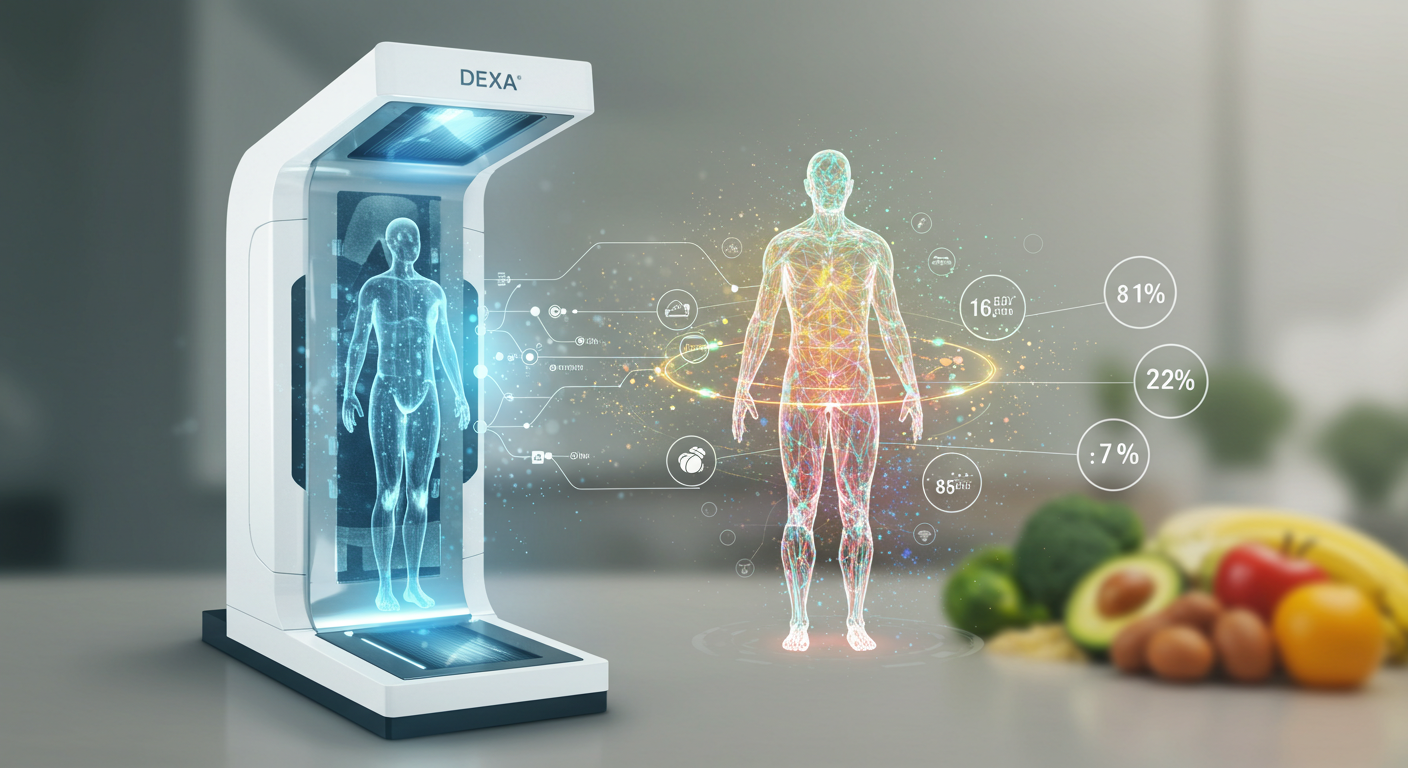In the noisy world of diet fads, calorie counters, and body image hype, one tool slices through the confusion with surgical precision—the DEXA scan. While once confined to clinical labs and bone health diagnostics, the DEXA scan now moonlights as a nutrition whisperer. It tells the truth that scales, mirrors, and tape measures cannot.
So can a DEXA scan help you fine-tune your diet? The answer, glowingly and unambiguously, is a yes.
But let’s back up and study it deeply.
What Is a DEXA Scan?
DEXA stands for Dual-Energy X-ray Absorptiometry. This tongue-twisting phrase may sound complicated, but its goal is simple: measure what lies beneath your skin. It does not guess or estimate. It calculates.
A DEXA scan beams two low-level X-rays through your body. These rays pass through fat, muscle, and bone at different rates. A machine captures this data. Then, software transforms it into an eye-opening body composition report.
The scan takes less than 10 minutes. You lie down, stay still for ten minutes, and leave with the truth.
The Lie of the Scale
Traditional weight measurement is a trickster. It hides the full story. You could weigh 70 kilograms, so could someone else. Yet, your bodies might look and function worlds apart. One could be mostly muscle and the other, mostly fat. The scale would never tell you which.
This is where DEXA steps in like a nutritionist with X-ray vision.
It breaks your body into three primary components: fat mass, lean mass, and bone mass. Each number matters. Each tells a chapter of your health story.
Body Fat: The Real Villain or Misunderstood Hero?
Everyone is concerned about body fat, but not all fat is evil.
There is essential fat—the good kind. Your organs need it, and your hormones depend on it. Women require more of it than men.
Then, there is subcutaneous fat—the pinchable kind that sits under your skin.
Lastly, we have visceral fat—the sneakier, more dangerous variety that wraps around your organs.
A DEXA scan shows how much fat you carry, where it sits, and how it compares to healthy norms. Once you know the fat situation, your diet plan can shift from generic to surgical.
Lean Mass: The Metabolic Engine
Muscle is not just for gym rats and bodybuilders. It’s a metabolic furnace. The more lean mass you carry, the more calories you burn—even when binge-watching your favourite show. That’s not hyperbole—It’s science.
DEXA gives you a lean mass breakdown for each limb, your trunk, and your overall physique. It reveals imbalances, underused muscles, and areas that need extra fuel.
For example, if you have low muscle mass in your legs, you might not need more treadmill time, but you might need more protein. Your diet plan, post-scan, will no longer be a shot in the dark. It becomes precise.
Bone Density: The Silent Guardian
While not directly tied to diet for most people, bone density should not be ignored. Low bone mass can indicate nutritional gaps. Vitamin D? Calcium? Protein? Something might be lacking.
DEXA exposes these weak points, showing if your bones are thriving or silently crumbling. Diet can help reverse the tide—but only if you know the tide is turning.
How DEXA Transforms Your Diet Plan
Once you’ve faced your DEXA results, it’s hard to go back to calorie counting alone. The insights change how you view food. They whisper strategies most meal plans ignore.
Here are some ways it revolutionises your eating game:
1. Macronutrient Tuning
Let’s say your scan reveals a high fat percentage and low lean mass. You might need to up your protein, not slash your calories. Protein fuels muscle growth and repair. More muscle means higher metabolism.
You might also adjust fat and carbohydrate intake—not based on a chart, but on your body’s current blueprint.
2. Targeted Weight Loss
Instead of trying to lose “weight,” your goal becomes clear: lose fat, keep muscle. A cookie-cutter diet may melt fat but take muscle with it. That’s counterproductive. But with DEXA, you measure what you’re actually losing. You keep the gains and target the losses.
3. Meal Timing and Strategy
DEXA may reveal low energy reserves or muscle loss in specific limbs. That might hint at under-fueling before workouts or overtraining without proper replenishment. You can now match your meals to your movement. Precision replaces improvisation.
4. Monitoring Progress with Honesty
You can repeat the scan every few months. It becomes a scoreboard—one that doesn’t lie. Did your new meal plan boost lean mass? Did your new macros drop visceral fat?
You find out. No filters. No illusions.
Who Should Consider DEXA?
DEXA scan is not just for athletes or bodybuilders. It is for everyone.
- People starting a new diet
- Individuals with unexplained weight gain or fatigue
- Those recovering from illness or injury
- Women managing hormone fluctuations
- Seniors tracking bone health
- Anyone tired of the guesswork
Limitations to Note
DEXA scans are not perfect. They can be expensive, and not all clinics offer them. Some results may vary depending on hydration or food intake. But these are minor blemishes on an otherwise stellar tool.
Final Thoughts
The DEXA scan is not just a medical device. It’s also a nutritional compass. It steers your diet with the grace of science and the accuracy of data. When paired with a trained nutritionist or dietitian, it becomes unstoppable.
If you’re ready to get your DEXA scan, visit Care Scan today.
